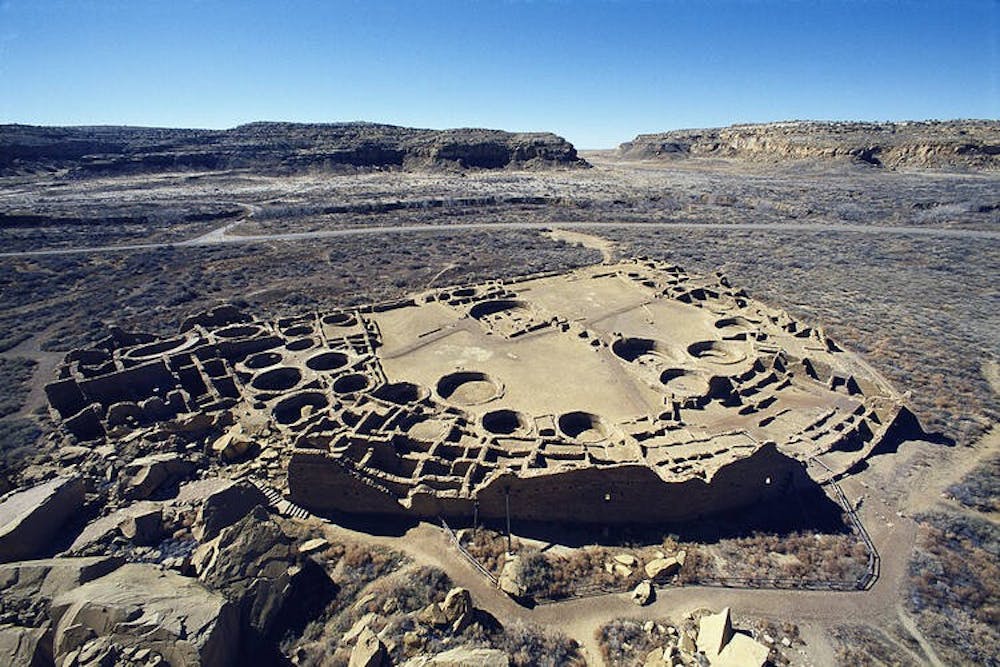President Joe Biden announced on Monday that his administration will block federal oil and gas leasing within a 10-mile buffer zone around Chaco Canyon, a sacred Indigenous site in New Mexico. A two-year ban on leasing will be enacted in the coming weeks, which will enable the Bureau of Land Management to conduct environmental analysis and public comment. They will then consider a 20-year withdrawal of drilling on public lands in the region.
“The Department of the Interior Secretary Deb Haaland is basically pushing the Bureau of Land Management to do a full environmental assessment of the region, in terms of its impacts relating to oil and gas,” Julia Bernal, director of Pueblo Action Alliance, said.
The withdrawal of mining development would only apply to federal public lands — not state, private or tribal lands — due to the limited jurisdiction of the Department of the Interior, according to Bernal. She said the 10-mile buffer was an arbitrary figure adopted by the Pueblo Nations of New Mexico in their advocacy efforts, and only addresses a small portion of the environmental and social effects of drilling in the San Juan Basin.
“It’s significant to see something done in that area because historically nothing has been (done) since the oil and gas industry (arrived) in that area,” said Lauren Howland, environmental justice organizer for Pueblo Action Alliance and member of Diné Allottees Against Oil Exploitation.
Howland said they have multi-generational land allotments from 1918 that lie within the proposed 10-mile buffer zone in Chaco Canyon, which makes the buffer especially important to them. Though their family was involved in the fossil fuel industry developing roots at Chaco Canyon, English translations to the Diné Navajo language didn’t communicate the full scope of the threats of fracking. Now, this moratorium could be one way for the fossil fuel industry to right their wrongs.
“(Chaco) is a particularly interesting landscape because it's addressing issues of climate, but it’s also addressing issues around culture,” Bernal said. “This is a cultural landscape with ancestral and living communities, so it also lends perspective to that Indigenous worldview. That culture, land and the people are synonymous with each other.”
Bernal said existing oil and gas infrastructure on the Chaco landscape includes fracking wells, methane flaring and holding tanks, which are serious threats to climate change. She said there are thousands of wells throughout the landscape.
“When you start putting in these major industrial sites, it’s incompatible with living communities (and) the greater Chaco landscape,” said Mike Eisenfeld, energy and climate program manager for the San Juan Citizens Alliance.
Bernal said this leasing block is significant for multiple reasons, including the “political momentum” it could spur, opening the door for co-management of the landscape between federal land management agencies, tribes and community organizations. She said this move, spearheaded by the Department of the Interior, speaks to the relationship Haaland has with Pueblo nations from New Mexico.
“It really is an action that reflects on how important it is to center Indigenous perspectives in addressing climate issues,” Bernal said.
Eisenfeld said the Bureau of Land Management (BLM) has failed to provide immediate recourse for the disproportionate environmental and social impacts faced by Indigenous communities in the area.
The Greater Chaco Coalition became a formalized group in 2014, according to Bernal. The coalition, which the Pueblo Action Alliance is part of, has been advocating for action against the impacts of the oil and gas infrastructure with the BLM and Department of the Interior, Bernal said.
Get content from The Daily Lobo delivered to your inbox
“It’s (Indigenous) communities that are impacted by adverse health impacts from oil and gas infrastructure, and of course there’s a culmination of other social impacts relating to violence, sex trafficking (and) missing and murdered Indigenous people,” Bernal said.
According to Bernal, the oil and gas sector employs predominantly outsourced male workers, who live in worker housing called “man camps” and can “orchestrate sex trafficking operations or just inflict violence against Native women who live traditionally in those areas.”
“This is a really big step moving forward and we’re hoping it can set precedence and gain some momentum on how we’re going to address oil and gas in the region,” Bernal said.
Bernal said the coalition is also fighting for remediation and clean-up of the area, as well as the creation of “economic avenues for renewable energy (to) sever dependence on fossil fuels,” which this moratorium doesn’t address.
Though Howland said this administrative move is worthy of celebration, they will continue to hold the Biden administration accountable through public comment and engagement throughout the two-year review.
Rebecca Hobart is a senior reporter at the Daily Lobo. She can be contacted at news@dailylobo.com or on Twitter @rjhobart






